Transcript
LUCY: Good afternoon.
I just want to start out with a message of sincere gratitude to the consultation planning team, because every speaker knows this is the most coveted time slot to speak at [audience laughs] during a conference . . . right after lunch . . . second day! Because you’re all fresh, you’re ready for more information, you’re just a vessel, right? No one’s tired.
That’s not you, hmm? Hang in there with me. This is work; this is kind of the “work part” that we’re entering into, and we’re in this together. And you don’t want to miss the gorilla in plaid.
This time of year recalls vivid memories for me: first, being a fan, and then an assistant coach for Trinity’s cross country team. The crisp air, the golden lighting, the leaves starting to turn color—it all brings back memories of times when Ben and I would cheer on our daughter Kate, and the dozens of other Trinity runners, as they ran a 5K twice a week. [In sequence, several photos of a cross country race appear on the screen.]
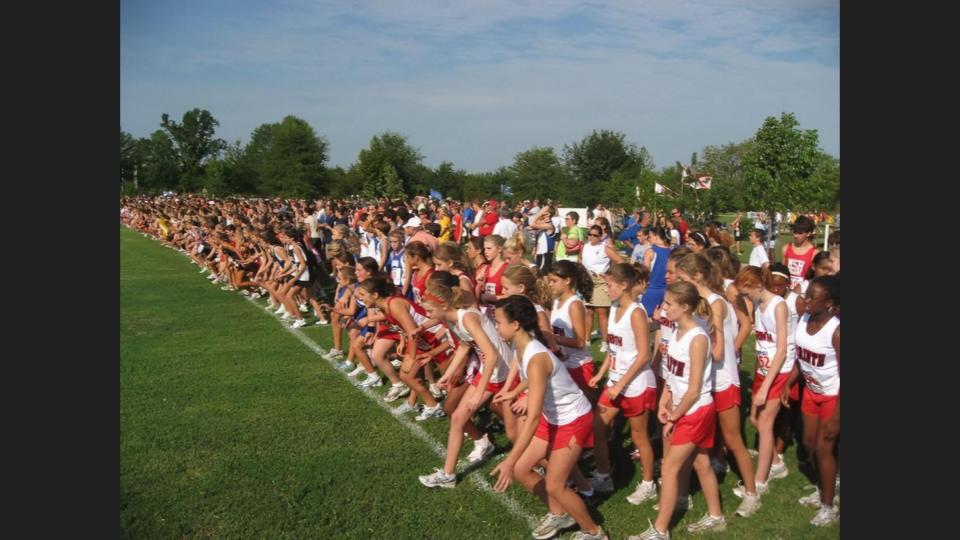
They began a race stretched out horizontally at the starting line, and eventually stretched out vertically, jockeying for the lead positions as if going through a funnel, as the course narrowed.
After the start, most fans congregate at the finish line, cheering enthusiastically for the first five runners on a team to cross, ’cause that’s what really counts for the team score. And then, the crowd disperses and congratulates the team. But as coaches, we had to position ourselves at strategic points along the route to be there for every single runner—the elite ones, and those who would finish dead last.
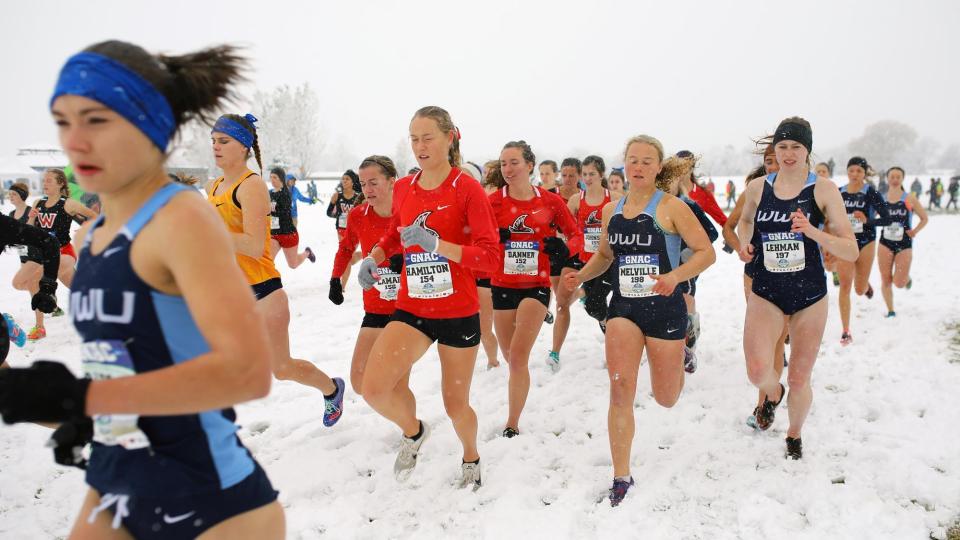
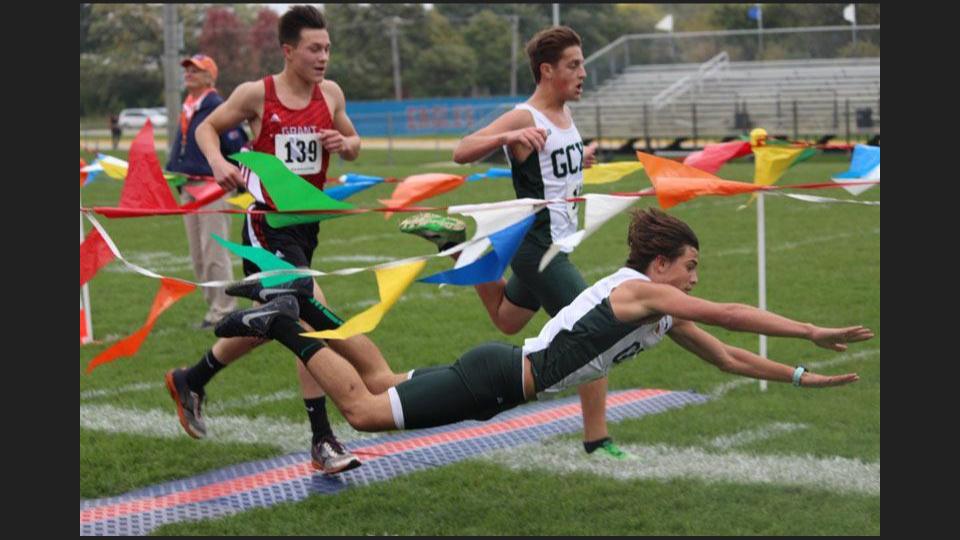
The challenge became how to pay attention to each runner, to provide encouragement for the race they had planned to run, to time their intervals, and st—to stay with them for the entire race, no matter what obstacles they faced. [As Lucy speaks, the screen displays consecutive slides showing these obstacles, including snow.] Literal obstructions on the course, side aches, dehydration, blisters, running on little sleep—if you can imagine that for teenagers—limbs freezing in the cold temps. [Lucy and audience chuckle.] That [deep snow on the course] actually happens here. Tom was lying when he said that we have great weather all the time. [Lucy laughs.] I’m just giving you a picture of reality! We were committed to helping them grow as a runner [sic] and finish each race better than the last—whatever it takes.
Thank you, Elizabeth.
The purpose of this talk is to teach you how to lead a small group through the process of deciding how they will meet together to talk about the sources. And you’re gonna hear direct parallels to what Mike just shared. But repeating some things is worth it.
Yesterday, Mary Frances showed us how to lead the group in the process of picking which sources to discuss together. That was the focus of her talk and her role play. But did you notice in the role play, many of the people naturally brought up the question, or the question surfaced, how we’re gonna meet? And that’s our focus now.
Like a coach, you’ll be attentive to the unique situations of each group, supporting their decisions regarding how they want to proceed, and encouraging them as they navigate the first phase of this consultation. How each group determines the best way to meet together is key to the overall goal of collectively discerning the Lord’s will for our future as a community. And there is a lot of room for creativity here!
Remember, what we are primarily addressing here are the decisions the small groups will be making for their conversations about the sources. Someone might want to listen to and discuss a lot more of the sources than what the group commits to, and that’s really okay. They’re free to do that, and in different configurations of groupings. So maybe someone has a few people over for Lord’s Day with their household, and then they have a “Phase I” conversation after the meal. There’s a lot of room for creativity with different types of configurations of groupings.
How will the women’s groups and men’s groups meet together? We can break this process down into three parts.
Deciding who will participate. Everyone in the group is free to participate or not.
Deciding when to meet, and how often.
Deciding where to meet and other environmental factors, like snacks. [Audience laughs.]
We’re all servants to our brothers and sisters. That means we provide encouragement. This consultation is gonna be challenging at multiple levels. Practically making meetings happen is going to be challenging. I’m sure you’ve already been sort of projecting that challenge. Learning how to discuss the sources will be challenging. One way we can serve the groups and the group leaders is just through encouragement. We really can learn how to do this together. There will be rough patches, some obstacles, but it’s gonna get better with each discussion. And sometimes it’s really effective just to simply say, “The Lord is in this and he’s gonna show us a way!”
Remember what the Lord did during COVID? He showed us a way! There were difficulties, as Paul mentioned, but he [God] really was also in the mix with us. He helped us reimagine our normal in-person context for our conversations. We were all inspired to be more flexible, adaptable, and more creative. We learned how to make accommodations for one another’s unique situations. I think we can encourage tapping into that “muscle memory” and experience as we go forward with our groups. Our covenant commitment and the Lord’s help really will see us through this.
We should serve our brothers and sisters by helping them discover what they want, not impose what we want. Our job as servants is to help our brothers and sisters discern what the Lord in them wants to do, what they want to do together in the Lord, including the question of how to meet together. So don’t force or even encourage them to think about what we think they should do. We don’t know what they should do! The question is, what do they want to do, and how can we help them achieve that? A sign that we’re in the right spirit is when the group is reaching an agreement together, not waiting for the leader to tell them what to do.
This is just a little st—a personal story. Inspired by Nano’s talk from the kickoff on group consultations, I proposed to my husband Ben that we hold a family consultation addressing the questions if and how we’ll vacation together as a family going forward. So, I was anticipating our oldest daughter’s move to South Bend, and I thought it would be really helpful for us if we discussed the idea before she moved.
So, we had a family consultation, our first of its kind, where each person freely gave his or her input. Admittedly, I really wanted us to come up with the conclusion that yes, in fact, we wanted to make an annual family vacation a priority. And of course we would all want to visit the branches of the People of Praise, as what we decided to do together! [Audience chuckles.]
See? Yeah, you’re in agreement with me; it’s a good idea! [Audience laughter.]
But I resisted insisting on my own way from the get-go. In fact, as we talked, we all resisted the temptation—the five of us—to jump in with a critique, an interruption, a reason why so-and-so’s idea was not optimal. Our youngest, Izzy, recorded all of our ideas, everything we said, on large poster sheets that we hung on the walls. Skydiving and bungee jumping in exotic locations made the list. And me and my afraid-of-heights self tried not to cringe in the moment.
But it was honestly one of the most significant moments of family life that I’ve ever witnessed! The free exchange of ideas, total respect for one another, disciplining ourselves to listen to one another, and some new things coming forth that I didn’t know about my family. There was unity there in what we were doing, even in the midst of our differing suggestions. We’re still in the process of the consultation as a family, needing to consider and prioritize all of these ideas, even prioritizing the skydiving. We have to yet make a decision, but we’re off to a great start, and the Holy Spirit’s leading us and bringing us together into greater unity.
One of our most important goals as servant leaders is to bring about unity. That’s more important than any particular outcome. I’ll say that again. One of our most important goals as servant leaders is to bring about unity. That’s more important than any particular outcome. Our Spirit and Purpose states, “Our aim is unity, not uniformity. This unity is first of all to be, as Scripture says, a unity of mind and heart, a unity manifested in diversity that respects the unique gifts of each person as they are realized within the community” [Spirit & Purpose, section 13].
As Nick said yesterday, an essential preliminary step is to get the lay of the land of the groups. You and your group leaders will want to know the temperature of the groups before trying to talk practically about how to make these groups happen. So, if you recall Nick’s slide with the three-and-a-half boxes . . . ? Is this ringing a bell from yesterday? So, getting the lay of the land was the first box. You might want to revisit those points under that as a preliminary step.
Find out who will participate. It’s important that first, the leader of the group gives the basic information the group needs. And these are all just reminders. Remind them of the purpose of Phase I: learning about our People of Praise sources and our history, understanding where we came from.
Phase I will involve listening to and reading as many sources as we want, and then discussing them in our groups. The sources are organized into time periods, being released on the fifteenth of every month.
Recall that Mary Frances talked about different reading plans. A group could really choose to go that route. And in our table discussion following the workshop that Nick led, we were able to locate the reading plans on the website. And so, it’s just kind of fun to see that they’re there: little drop-down menu, two choices.
Second, we recommend that the group leader say something like, “We should read or listen to as many of the sources as we can. So let’s talk about what we’re interested in.” This is an invitation for everyone in the group to share about specific sources or topics that they really are interested in studying. Like I said earlier, Mary Frances showed us how to lead the group in the process of picking which sources to discuss together. That was the focus of her talk and role play. But we’re going to focus on how to help the group work through the very practical questions of just meeting.
And this could honestly go in a lot of different directions. So flexibility will be key.
Some people may express concerns about their ability to participate: they don’t have time; they are not interested; they can’t handle the technology; they think this is just for the young people; they think this is for the old people. Differences and disagreements within the group may really surface, and that’s all fine. No one should feel forced to participate, and no one should be held back from participating as much as she wants to.
But at some point, it might be really important to say something like, “Nobody has to do this if they don’t want to. But it’s also true that everyone’s participation in this consultation really matters. And this is each person’s avenue for making their personal opinion known. It won’t work unless we spend time with the sources together in Phase I. We’re gonna get out of it what we put into it.” From 1 Corinthians, “If everyone was an eye, where would the hearing be?” [1 Cor. 12:17]
Just last week I was in a conversation with a sister, and she mentioned to me that she was kind of resistant to all of this at the beginning when we started talking about the consultation initially. But since then she’s started to listen to the sources, and is really grateful for hearing more about our foundation. And it’s brought into her mind a sharper focus about what we’re really all about. And it’s become really personal for her. And she’s poised for the conversation in her group in a whole new way. She took a step.
It’s possible that a group may decide to not meet to discuss the sources. For example, there could be some special circumstances within the group—like, a sister or a brother has a serious illness, and what the group really needs to do right in this season is care for that sister or brother. And that’s okay.
Maybe there’s a few people who really want to discuss and study more than their groups. And this might be something that you take up as the mentor to help get them connected, because you’ll know who some of those people are.
Deciding when to meet, and how often. This will probably come up naturally during the opening conversations about who’s gonna participate. It’s crucial that each member of the men’s and women’s groups weigh in with his or her own thoughts about time, about when these conversations happen and how often.
Practically, discussing a source together could take about 45 minutes. Depending on how long the source is, much less than 45 minutes probably isn’t enough time to hear from everyone in the group their answers to questions one and two. And there’s a lot of options as to when that conversation takes place. And the group—like Mike said with the individual, the group is really free to come up with a plan that’s gonna work for them. And if the initial plan doesn’t pan out, they can try something new shortly thereafter. Flexibility is going to be really key.
Some groups might want to listen to a talk together and then discuss it immediately. As Mary Frances said, listening together is probably optimal, and it has its advantages. You have the experience of listening to a talk in common. It’s really fresh. But your group might find that it’s time-consuming, and that it might work better for your group to listen to a talk in advance and then discuss it. This way you can come with the notes in your journal. Or maybe you’ve written—you’ve typed something in your— in your app on the phone, and you’ve got a really concrete place to just start. Maybe it’s a hybrid of these two. Whatever works.
Practically, here’s a little suggestion: that if you do listen to a source together—that’s what you decide to do as a group—having a portable speaker handy or another way to project the audio will be really beneficial for the whole group. It can be really frustrating when we’re struggling just to hear a talk. And some of the older folks do not have great au—or, older talks, sorry—do not have great audio quality. So it’s—it might really pay off to have a speaker or something that can make sure the talk is audible for everyone.
One model for a group to devote the first—is for the group to devote the first 45 minutes of their men’s or women’s group to discussing a source, and then take an hour for their normal men’s or women’s group sharing. And this may involve, at least for this season, adding something like 30 minutes on to their regular meeting time so they have time for both. And I think it could be really effective, too, with this model, where you’re switching from one to the other, to mark the transition distinctly. So, set the journals aside, stand up, take a stretch break, sing a song from the green songbook, pray out loud together, offer the new time to the Lord, maybe a move [sic] to another room or space. Physically changing it up can help the group understand we’re doing something different here.
Another option could be that you meet entirely at a separate time, just to discuss the source, separate from your normal men’s or women’s group sharing. A shorter meeting, but focused and really pleasant. The group could decide to study a source on a different day of the week: Saturday morning; maybe after Sunday brunch—that could be kind of fun—or before or after a branch meeting. Zoom’s always an option too.
How often you discuss the sources. Every week? Twice per month? I know these conversations have already been kind of brewing; I’m sure at least you’re thinking about this. Again, the real important question is: What does the group want to do? And there’s no correct answer. They’re really free to engage with the sources as a group more or less frequently over the course of Phase I. And they might discover that the pace picks up as they really get into it; that’s what they decide to do together. Or that it takes more time and more thought to discuss, and they slow it down a bit. Adjustments are gonna be likely, and that’s just fine.
And I think it was Mike who also mentioned—or someone earlier—that the priority of making time for the consultation study will really need to be discussed within families. Husbands and wives helping each other figure out, When are we going to help make this happen for each other? Because we’re gonna—we recognize it’s gonna take some more time on our part. It’ll disrupt the family, but for [only] a season.
Where to meet. The group can pose questions to itself like: “What is the best environment for us to have this conversation?” “Is it within the normal environment of our men’s and women’s groups, what we’re used to, or someplace else?” “How will this time look differently than [sic] our normal time of sharing?” “How can we intentionally set this up so that we really look forward to it?”
Then let each person weigh in on their ideas for what will help make this environment distinctive. Sometimes providing food, a special snack, a different setting, comfortable chairs, and a pleasant environment makes the time more special, more productive, and more fun.
When I walk around Lake Nokomis in Minneapolis, I often see pods of hammocks between trees, and there’s just this grouping, and people are just havin’ a great time talking. That could be fun.
I heard one group has found that these conversations work well simply by moving to sitting around a table. Because they’re studying a source, they can have their book open. It’s easily accessible, and they have some banter, and they go around and discuss. They might get off topic, laugh a lot, and get back on topic.
There’s a household of single men who take camping chairs to a local state park and sit by the lake in the sun. That sounds really pleasant too.
I imagine a group conversing outside in our memorial garden [at River Ridge], or in the cozy “family room,” if you’ve poked your head in there. Depending on the time of day, someone brings coffee and a dozen Dunkin’ Donuts, or wine and a big bowl of popcorn, or rich dark chocolate. The group can gather around the leather chairs, around the coffee table, or push two of the high-top tables together, flip on the gas fireplace, open up their books, and the leader starts with, “What did you hear the speaker say?” And then they’re off and running.
Even on Zoom, the study of the sources can be productive and fun. And this is where we’re just gonna have to ask the Holy Spirit for some of those creative ideas.
I mean, I think you can really have fun with this. Maybe you break out the bell bottoms or jean skirts while discussing a resource from the 70s. [Audience laughs.] Or the shoulder pads and the big hair from the 80s. You could have a little fun with the decades, something like this. [Lucy begins to show a few slides of dated clothing from these decades.] [Audience laughs.] I mean, is this for real, guys? You recognize this? ’Cause that’s just scary to me. [Lucy laughs.] Or this [another slide]. Now, I recognize that. [Lucy chuckles.] Those were the days. Okay. We’re not going back to that. [Lucy laughs.] Thank you.
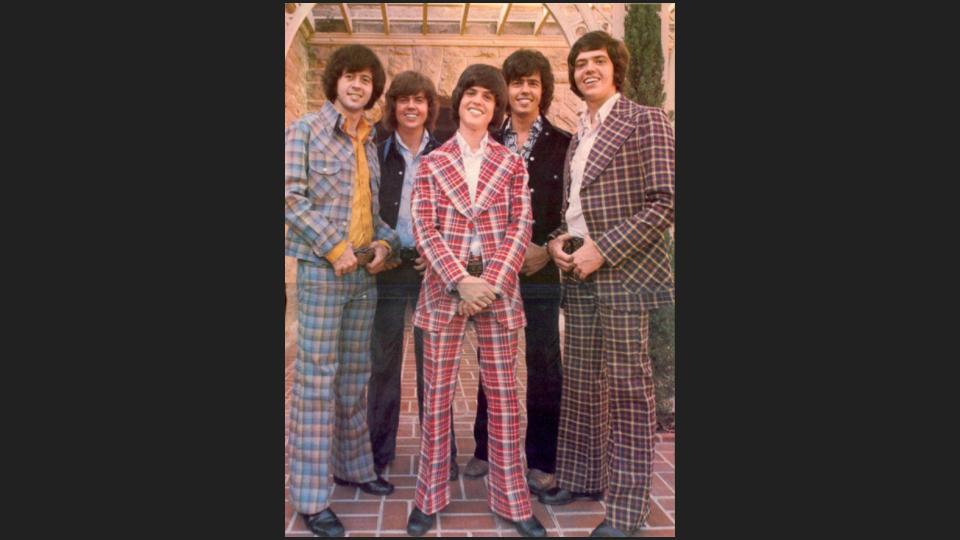
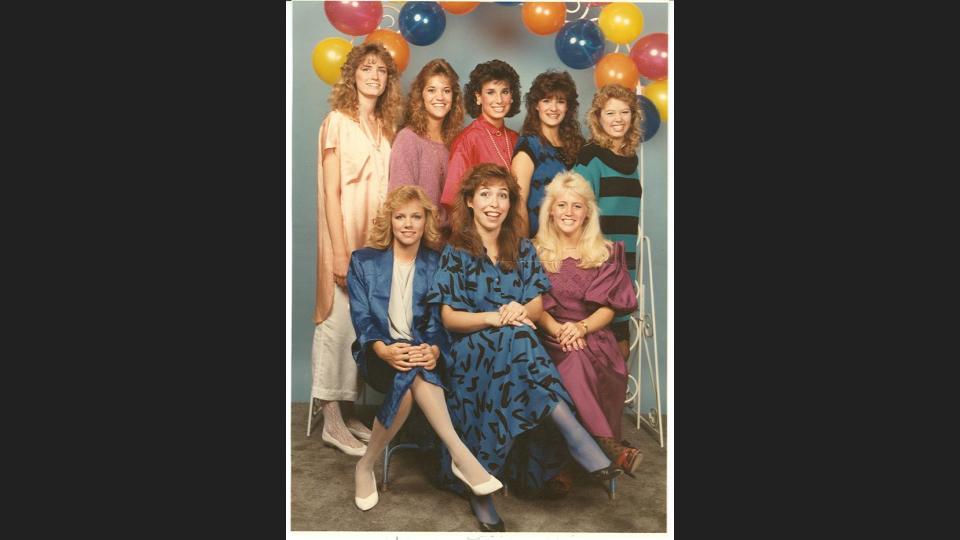
I mentioned that singing a song earlier might help mark the transition time between your studying a source and the normal women’s group time. But maybe you also pick a “theme song” for Phase I and help set the tone for the environment you are trying to create before studying a source. Maybe something like singing “Spirit of the Living God, fall afresh on us. Melt us, mold us, fill us, use us. Spirit of the Living God, fall afresh on us” could be a really powerful way to open up the setting for this conversation.
At the heart of this process—helping our brothers and sisters make the meetings happen—is our mutual trust in the Lord and his action in the hearts and minds of one another. Trusting that he’s gonna lead, guide, enlighten, and inspire, because the Holy Spirit is full of creative ideas!
And it’s evident, and I know we’ve seen this already, that the Holy Spirit is stirring our hearts and readying us for this new thing we’re doing together: a new way to learn and discuss and listen. One woman wrote this to me recently; she said:
I love the Sources app! I sat down this morning and prayed, telling the Lord that I want to give him my heart and full attention to this consultation. I asked him to help me. I asked him to give me a willing and generous heart. I thanked him for giving us the gift of the consultation. I see that the busyness of life could easily crowd out time to listen and read the sources, but it’s really about sitting next to the Lord, close to him, and getting to know his heart. Isn’t it?
Brothers and sisters, this is a time when we’re really getting ready to roll up our sleeves and get to work. Are we ready? Do we trust our Father? We can have hope, because he will show us a way. We can count on him because he’s going ahead of us. It’s his Spirit hovering over the surface of the waters. [Genesis 1:2]
Amen.
[Applause.]
Copyright © 2022 People of Praise, Inc.
